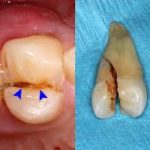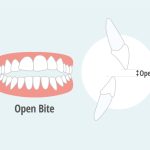Hypersensitivity of teeth is a phenomenon wherein, the patient feels moderate to severe pain when the teeth are exposed to temperature changes like hot and cold stimuli or with sweet and sour foods. Hypersensitivity may be sometimes so severe that even patient may feel pain even while breathing through mouth. Factually, a healthy tooth when exposed to such stimuli also experiences pain. But such a response may result only after the tooth is exposed to severely hot or cold stimuli in case of a healthy tooth.
With hypersensitive teeth, the pain generally goes off immediately after the stimulus is removed. If there is lingering pain then irreversible damage to the pulp is suspected and root canal treatment may be indicated in such cases.
- Tooth wear – Teeth can undergo wear due to various reasons, the most common being, wrong brushing, night grinding of teeth and excessive and frequent intake of acidic foods. Due to tooth wear the protective layers of enamel and dentin become thin and the harmful stimuli can irritate the pulp easily to elicit pain.
- Dental caries – As decay goes on invading dentin, the harmful products of bacterial activity irritate pulp to cause hypersensitivity
- Receding gums – Cementum, the layer that covers the roots of teeth is not as thick as enamel and is thin especially near the gums. Therefore when the gums recede due to disease, roots are exposed and teeth may become hypersensitive.
- Injury and/or fracture of tooth – If the fracture is extensive the tooth becomes sensitive as the dentin is exposed.
- Defective fillings – Old, defective, fractured or improperly done fillings may render teeth sensitive
Although the causes for hypersensitivity are known, the mechanism by which the pain is elicited is not fully known. Therefore hypersensitivity remains an extensively researched area in the dental field. Newer treatments are being suggested all the time with varied success. Most of the treatments aim at blocking the exposed dentin so that the stimuli are received with a less severity by the nerve endings in dentin. The treatments are discussed in detail under the treatments section.



